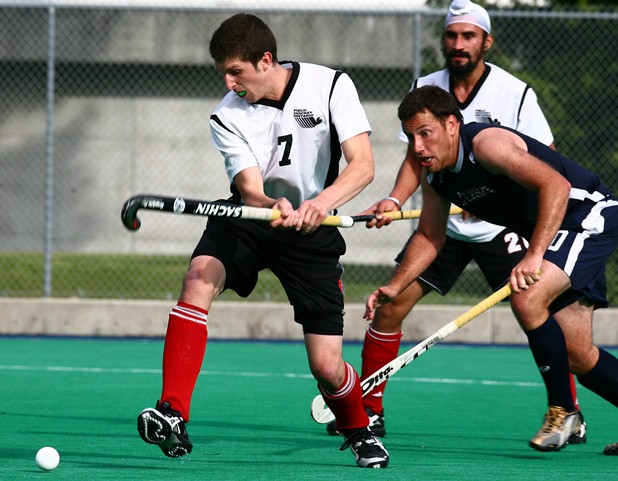The aim of the Skill Progression Pathway is to provide guidelines for the introduction and training of the major technical and tactical skills used within the game today. It is meant to serve as a supplemental resource to the LTHD pathway.
Variations of the skills included in this resource exist and can be coached once the basic version has been developed appropriately. To ensure simplicity and efficiency, variations of the skills involving a change in context (e.g. skill execution while moving in different directions, or variations in ball speed) are not dealt with here. Over time, FHC will produce specific metrics to measure skill performance within each stage in order to provide coaches and athletes with defined outcomes and expectations of a field hockey athlete.
Fundamental field hockey skills are introduced prior to the onset of puberty as this represents a period of accelerated adaptation to skill development. The introduction of skills that do not represent significantly new motor learning but contain a risk of safety in execution should only be introduced to experienced athletes able to accurately judge safety.
Skills may be progressed by modifying variables during skill execution such as:
- Space (bigger / smaller)
- Time (faster / slower)
- Competition (add defenders / attackers)
- Number of decisions (increase of decrease number of passing options)
The skill progression pathway is separated into five linear periods:
Acquisition: The early stage of learning where the athlete becomes capable of coordinating key components of movements and executing them in the correct order, thus performing a rough form of the skill. The movements are not well synchronized or under control, and they lack rhythm and flow. The execution is inconsistent and lacks precision. The athlete has to think about what he or she is doing while performing the skill. Both form and performance tend to deteriorate markedly when the athlete tried to execute movements quickly or is under pressure, as may be the case in a competitive situation.
Consolidation: The athlete can execute the movements or the skill with correct form. Movement control, synchronization, and rhythm are good when performing the skill under easy and stable conditions. The movements can be repeated consistently and with precision under these conditions. Some elements of performance can be maintained when the athlete is under pressure, conditions change, or demands increase, but performance remains inconsistent. The athlete begins to develop a more personal style.
Refinement: The athlete can execute the movements in a way that is very close to the ideal in terms of form and speed. The performance is very consistent and precision is high, even under very demanding conditions and in situations that are both complex and varied. Only minor fine-tuning may be necessary to achieve optimal execution, and a fairly personal style is established. All components of the movement have been automated, which enables the athlete to focus on the environment while performing and to make rapid adjustments as necessary. The athlete can reflect critically on his or her performance to make corrections.
Perfection: This stage is achieved only by the best athletes. The movements can be performed according to the ideal, and the athlete has developed a personal style that is efficient. Personal interpretation of movements or personal movements can be combined into unique patterns in response to specific competitive situations.
Maintenance: The athlete has reached a plateau of a specific skill after any one of the previous four periods. Athletes are able to preserve consistency in the execution of the skill on an ongoing basis.
Please visit www.lthd.fieldhockey.ca for the most up to date progression pathway documentation.


